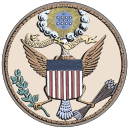This article needs additional citations for verification. (February 2016) |
 |
|
Union states in the American Civil War |
|---|
|
|
| Dual governments |
| Territories and D.C. |
At the outbreak of the American Civil War in April 1861, Kansas was the newest U.S. state, admitted just months earlier in January. The state had formally rejected slavery by popular vote and vowed to fight on the side of the Union, though ideological divisions with neighboring Missouri, a slave state, had led to violent conflict in previous years and persisted for the duration of the war.
While Kansas was a rural frontier state, distant from the major theaters of war, and its Unionist government was never seriously threatened by Confederate military forces, several engagements did occur within its borders, as well as countless raids and skirmishes between local irregulars, including the Lawrence Massacre by pro-Confederate guerrillas under William Quantrill in August 1863. Later the state witnessed the defeat of Confederate General Sterling Price by Union General Alfred Pleasonton at the Battle of Mine Creek, the second-largest cavalry action of the war. Additionally, some of the Union's first Black regiments would form in the state of Kansas. These contributions would inform the complicated race relations in the state during the reconstruction era (1865–1877).
The decision of how Kansas would enter the Union was a pivotal one that forced the entire country to confront the political and social turmoil generated by the question of abolition and contributed to the strong division in sentiment that eventually erupted into war. The early violence there presaged the coming national conflict, and throughout the war, Kansas remained a staunchly loyal Union stronghold at the western edge of a border region otherwise populated by uneven governments and mixed sympathies.